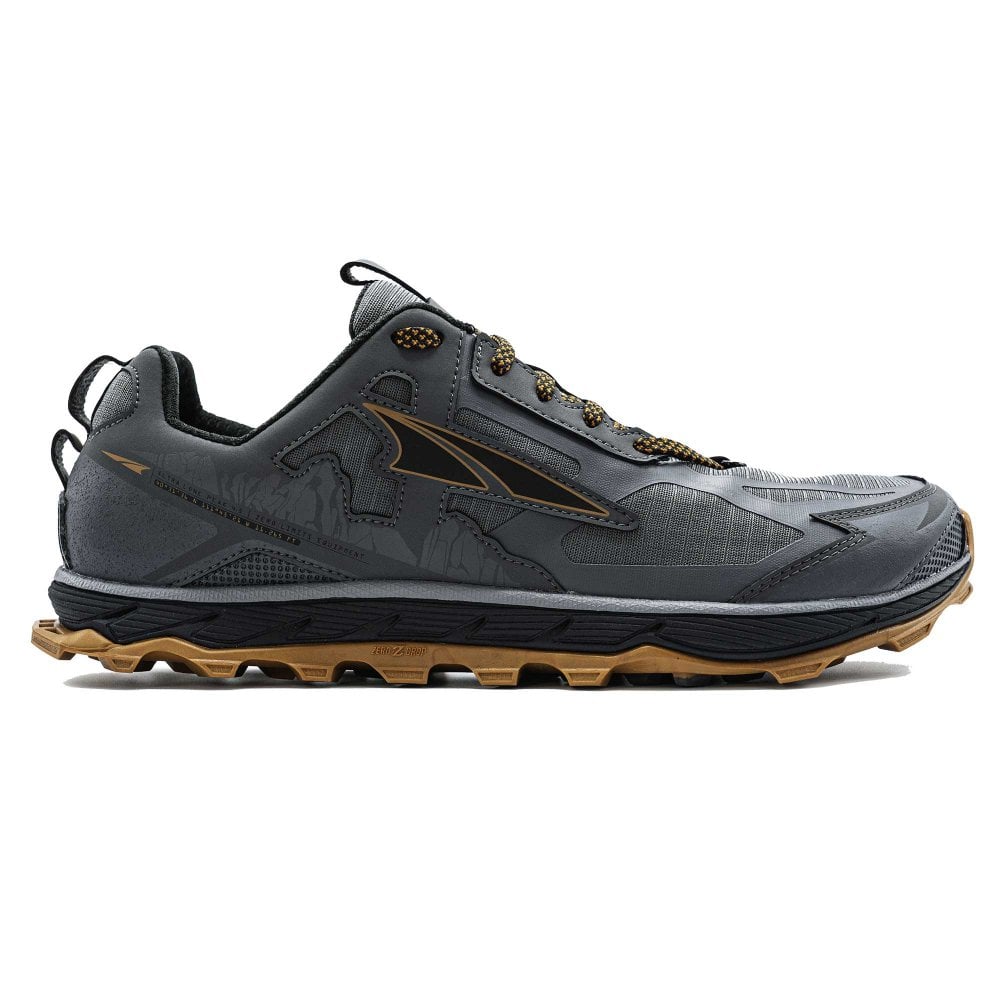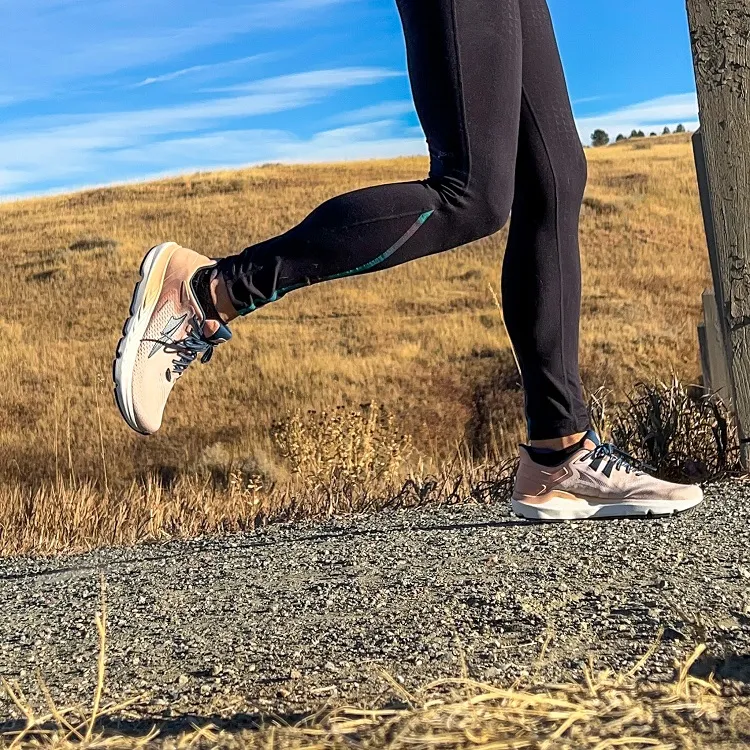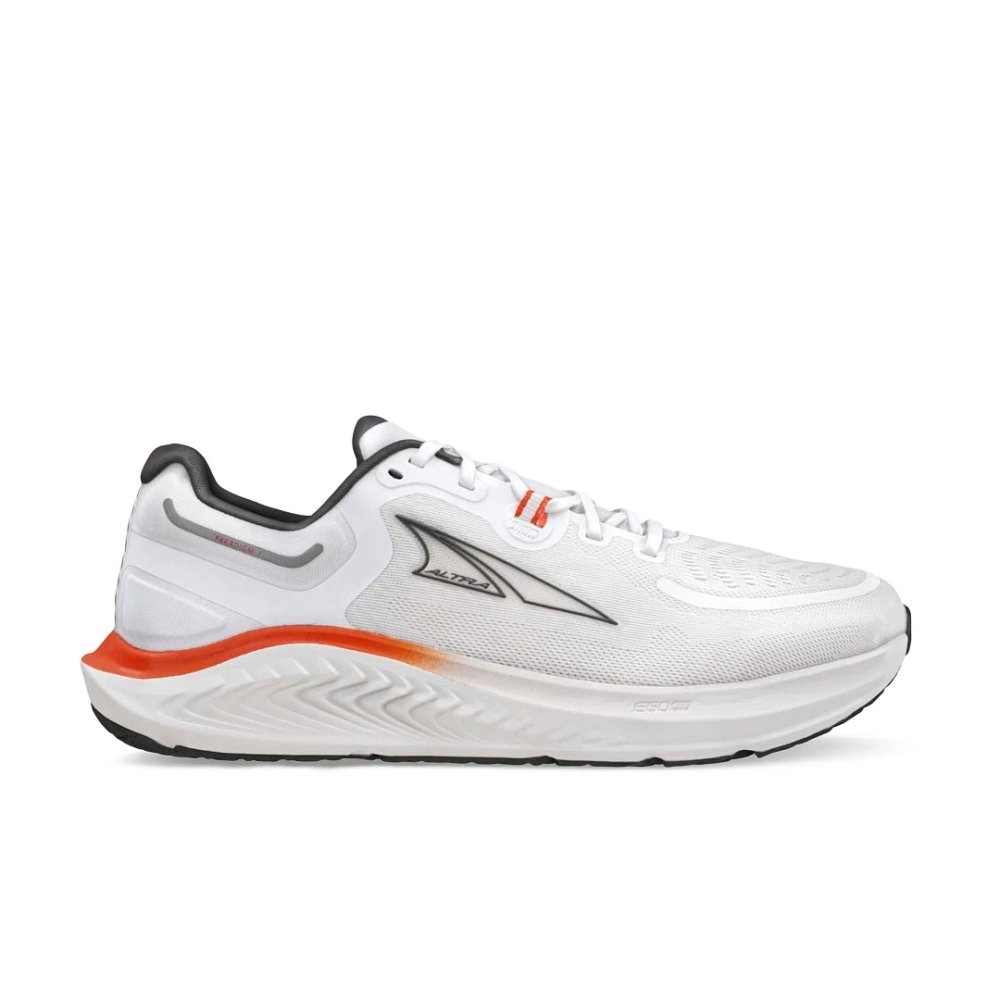What Are Zero Drop Running Shoes?
Zero drop running shoes have a unique design. They feature no height difference between the heel and the toe. This creates a ‘flat’ platform for your foot. Unlike traditional running shoes, they don’t have extra cushioning in the heel. The term ‘zero drop’ comes from the lack of incline, like a flat surface. These shoes aim to mimic barefoot running. Advocates suggest they can promote a more natural running posture. They may help in reducing strain on the body, commonly caused by elevated heels. A debate exists over their benefits and risks, which we will explore. Are you curious about how they might affect your running form? We’ll cover that in an upcoming section. Stay tuned for insights on transitioning to zero drop running shoes safely.

The Benefits of Zero Drop Running Shoes
Zero drop running shoes offer several benefits. They encourage a natural foot strike, which can lead to improved balance and stability. These shoes support a more natural posture during runs. This can help runners avoid common overuse injuries. With zero drop running shoes, you may find an increase in your running efficiency. This means better energy utilization during your runs. A more natural running form can also boost muscle engagement in the legs and feet. This promotes stronger muscles over time. You may experience a greater range of motion in your ankles. This is due to the level surface of the shoes. Some runners report a heightened sense of connection to the ground. This can improve overall running experience. Remember, it is essential to transition slowly to zero drop running shoes. This ensures your body can adapt properly to the change.
How Zero Drop Running Shoes Impact Your Running Form
Zero drop running shoes have a direct impact on how you run. Without the added heel height found in traditional running shoes, your form can undergo significant changes. The level platform promotes a mid-foot or forefoot strike. This differs from the heel-first strike seen in many runners who use shoes with raised heels.
When your foot lands closer to the mid-foot or forefoot, your calf muscles and Achilles tendons engage differently. They work harder, which can strengthen these areas over time. However, this also means there’s a period of adjustment where you might feel sore as your body adapts.
With a zero drop, your stride may become shorter and more compact. This can lead to quicker steps and reduced impact on joints. A natural stride aligns the feet, hips, and back, potentially lowering the risk of injury. It improves posture and can alleviate stress on the lower back and knees.
Runners often report a greater sense of ground awareness with zero drop shoes. This enhanced perception can contribute to better agility and response during runs. As you become more accustomed to the new shoe style, you may notice benefits in balance and proprioception. Proprioception is your body’s ability to sense movement and position.
It’s important to note that zero drop running shoes may not be suitable for everyone. And they’re certainly not a ‘one-size-fits-all’ solution. It’s crucial to consider individual factors such as foot structure, running style, and any pre-existing conditions. Consulting with a professional, like a podiatrist or running coach, can provide personalized advice on whether zero drop running shoes are right for your running form. For those who transition successfully, zero drop running shoes can be a tool for a more efficient and injury-free running experience.
Comparing Zero Drop to Traditional Running Shoes
When comparing zero drop running shoes to traditional running shoes, key differences emerge. Traditional running shoes typically feature a raised heel. This design often results in a heel-striking gait. By contrast, zero drop designs encourage landing more on the mid-foot or forefoot. Let’s look at some distinct contrasts between the two types of running shoes.
Design and Structure
Zero drop shoes have a flat sole from heel to toe. Traditional shoes have a higher heel, often with significant padding. The structure of zero drop shoes supports a natural foot position. Traditional shoes may alter foot placement due to their sloped shape.
Impact on Running Form
Zero drop running shoes promote a running form close to barefoot style. Traditional shoes can cause a heel-first running pattern due to their cushioned heels. Running in zero drop shoes usually changes your stride to be shorter and faster.
Muscle Engagement
Transitioning to zero drop shoes can strengthen lower leg muscles. This is because they engage the calf and Achilles more intensely. With traditional shoes, the design may reduce this engagement, potentially leading to weaker muscles over time.
Injury Prevention
A natural running form encouraged by zero drop shoes might lower injury risk. It can also reduce stress on your lower back and knees. In contrast, traditional running shoes with their heel design might not provide the same benefits.

Suitability and Comfort
Some runners find zero drop running shoes more comfortable due to the natural foot position. Others may prefer the familiar feel and extra cushioning of traditional running shoes. Preference often depends on individual biomechanics and comfort.
Adapting to zero drop running shoes requires time and attention to your body’s cues. Not all runners will benefit from the switch. It’s important to consider your own needs before making a change. Further sections will address selecting the right zero drop shoes and safe transition methods.
Selecting the Right Zero Drop Shoes for Your Needs
Selecting the right zero drop running shoes is crucial for a good experience. Here are factors to consider when choosing zero drop shoes:
Consider Your Foot Type
Everyone’s feet are different. Look at your foot arch—flat, normal, or high. Choose shoes that offer support for your specific type. Some zero drop shoes provide extra support features.
Analyze Your Running Style
How you run matters. Do you land on your toes, mid-foot, or heel? Pick shoes that complement your natural running style. This adds comfort and may reduce injury risks.
Assess the Cushioning
Zero drop does not mean no cushioning. Some shoes have more padding than others. If you’re transitioning, start with more cushioning. It can ease the shift to less padding over time.
Test for Comfort and Fit
Comfort is key. Try shoes on at the end of the day when feet are largest. Ensure there’s enough space for toes to move. A snug fit at the mid-foot with no slipping at the heel is ideal.
Durability Matters
Quality shoes last longer. Look for durable materials and solid construction. Check reviews or ask experienced zero drop runners for suggestions.
Understand the Transition Process
Remember, switching takes time. A slow transition allows your body to adapt. Start by rotating between your old shoes and new zero drop shoes.
By taking these steps, you can find the shoes that fit your feet and enhance your running. Always listen to your body’s feedback. This can help avoid discomfort or injury as you adjust to zero drop running shoes.

Transitioning to Shoes Safely
Transitioning to shoes requires caution and patience. It’s not something to rush. Here is a step-by-step process to ensure a safe transition:
Start Slowly
Introduce shoes gradually into your routine. Begin with short walks or light jogs. This helps your body adjust without strain.
Listen to Your Body
Pay attention to any discomfort or pain. Soreness is normal, but sharp pain is a warning sign. Adjust your pace and duration accordingly.
Strengthen Your Feet and Ankles
Engage in exercises that strengthen your feet and ankles. Strong muscles support the adjustment to a new running form.
Mix with Traditional Shoes
Initially, alternate between traditional and shoes. This can reduce strain as your body adapts to the new style.
Increase Distance Gradually
Slowly build up the distance and intensity of your runs. Avoid increasing both at the same time to prevent injury.
Be Patient
Transitioning can take weeks or even months. Allow yourself time to adapt to the shoes fully.
By following these careful steps, you can make a safe and successful switch to shoes. Keep in mind the importance of taking the transition at a pace that’s right for your body.
Common Misconceptions About Zero Drop Footwear
As zero drop running shoes gain popularity, various misconceptions circulate among runners and athletes. Let’s clarify some common myths to help you understand shoes better.
Zero Drop Shoes Are Only for Expert Runners
A common myth asserts that shoes are suitable only for seasoned runners. In truth, runners of all levels can use them. They could benefit beginners by encouraging a natural running form from the start.
Zero Drop Equates to No Cushioning
Another misconception is that zero drop means no cushioning. This is false. Zero drop shoes can have varying levels of padding. The difference is in the even sole, not the absence of cushion.
They Prevent All Running Injuries
Some believe shoes can prevent all injuries. This is not accurate. While they may reduce certain risks, it’s still possible to get injured. Proper training and body awareness are important.
Transition Is Easy and Quick
Many think switching to zero drop shoes is simple. However, transitioning can take time. It often requires patience and gradual adjustment to avoid discomfort.
They Are Uncomfortable and Unsuitable for Long Runs
Some runners are under the impression that zero drop running shoes are uncomfortable for long distances. This is not necessarily the case. Comfort depends on individual fit and personal preference.
By debunking these myths, you can make an informed decision about whether zero drop running shoes are right for you. Always remember to consider your unique needs and consult with a professional if unsure.
Best Practices for Maintaining Zero Drop Running Shoes
Maintaining your shoes is essential for their longevity and performance. Here are best practices to follow:
Regular Cleaning
Keep your shoes clean by wiping away dirt and debris after each run. Use a soft brush or cloth.
Proper Drying
If they get wet, air dry your shoes away from direct heat or sunlight. Stuff them with newspaper to absorb moisture.
Storage
Store your shoes in a cool, dry place. Avoid leaving them in extreme temperatures or confined spaces like cars.
Rotate Pairs
If possible, rotate between two pairs of shoes. This allows each pair time to recover from wear and extends their life.
Inspect Regularly
Check your shoes for signs of wear, especially in the sole and upper. Replace them if they show significant wear or discomfort.
Avoid Machine Washing
Avoid putting your shoes in the washer or dryer. This can damage the materials and affect the shoe’s structure.
Lacing Technique
Use a lacing technique that firmly secures your foot without undue pressure. This helps maintain shoe shape and fit.
By following these practices, you ensure that your zero drop running shoes remain in top condition, providing comfort and support for your runs.